Current Trends for HIV in Ontario
OHESI produces detailed blog posts and reports to examine patterns in HIV testing, new diagnoses and the HIV care cascade. Scroll down to find the most current data available for key indicators. Check out our data blog and reports for full analyses.
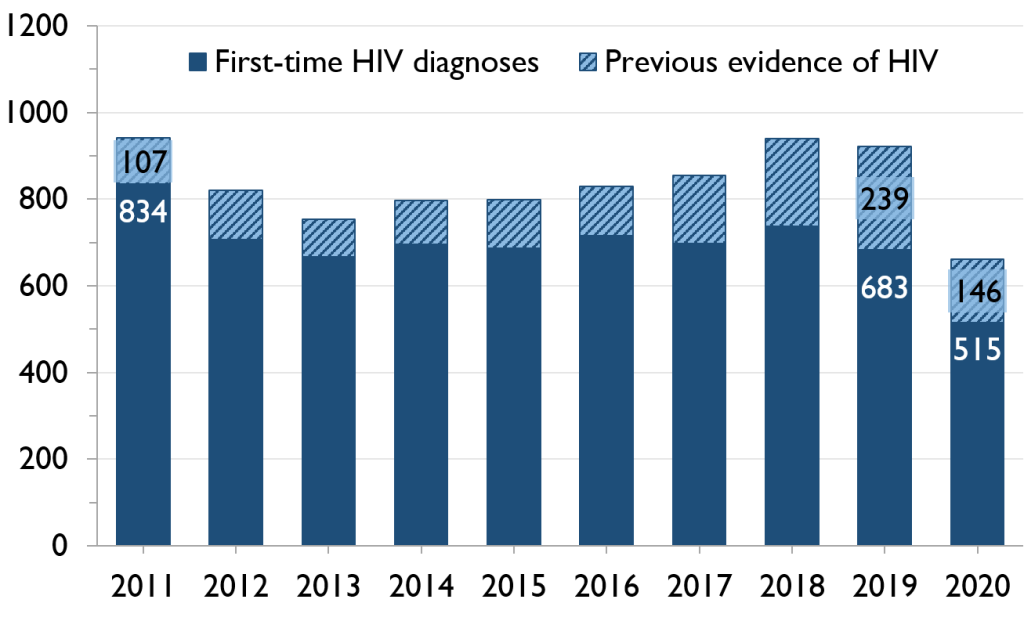
First-time HIV diagnoses and Persons with Previous Evidence of HIV, by year, Ontario
Both first-time HIV diagnoses and diagnoses with previous evidence of HIV were down in 2020. The number of both first-time diagnoses and positive tests with previous evidence of HIV decreased substantially in 2020.
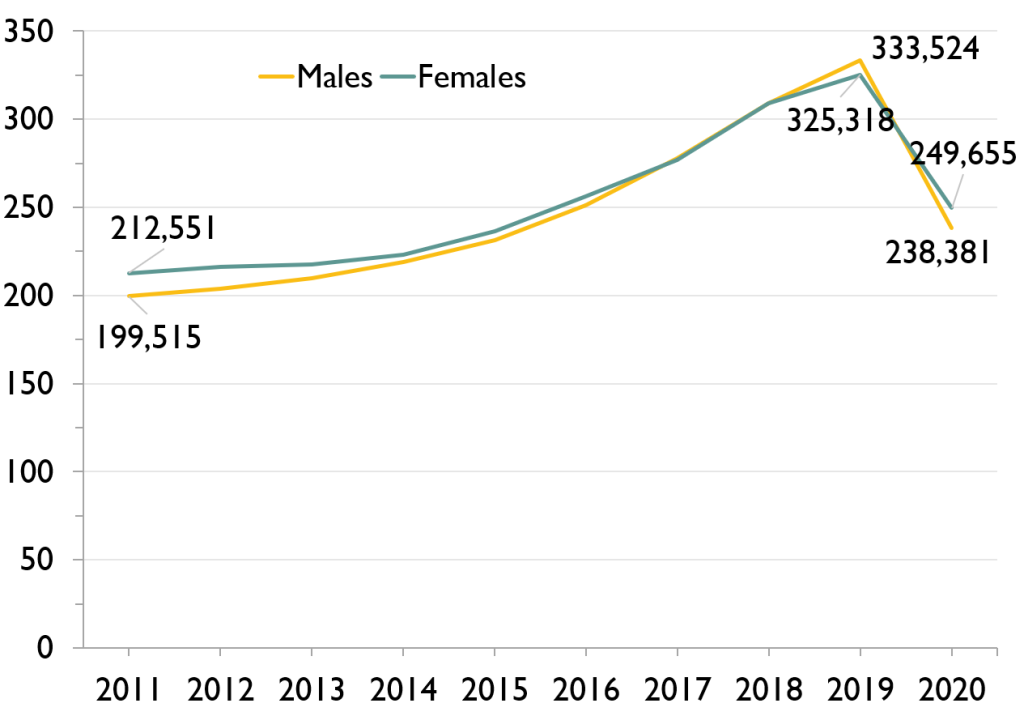
HIV diagnostic tests, by sex and year, Ontario
The number of HIV Tests Down in Males and Females in 2020. This decline in the number of HIV diagnostic tests was a reversal of the trend of increasing tests over the past decade.
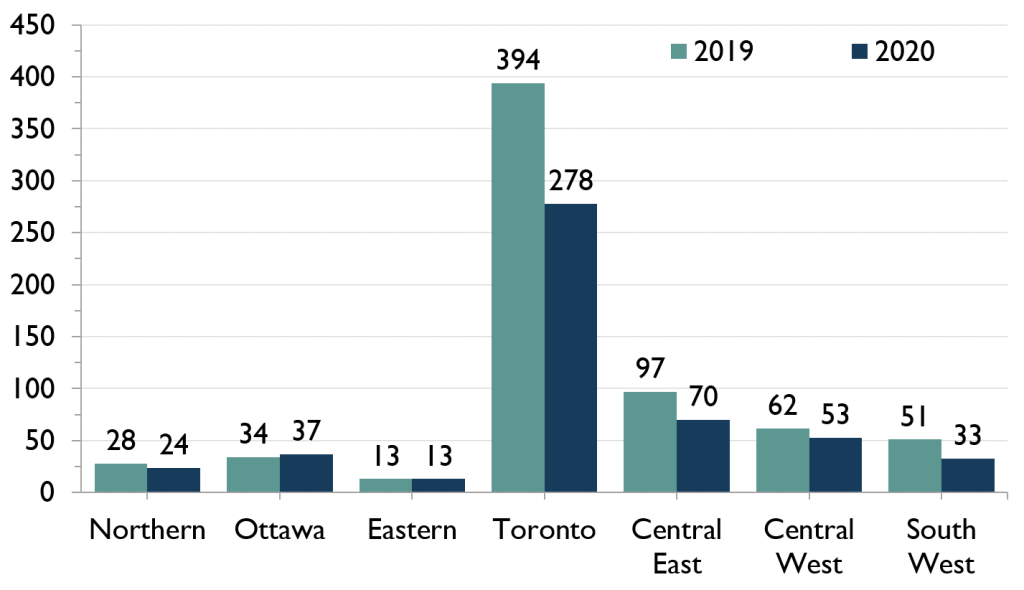
HIV Diagnosis by Ontario Health Region
The number of first-time HIV diagnoses went down in all almost all Ontario health regions in 2020. With the exception of Ottawa and Eastern, health regions saw a decline, with the largest decline in Toronto, going from 394 diagnoses in 2019 to 278 diagnoses in 2020.
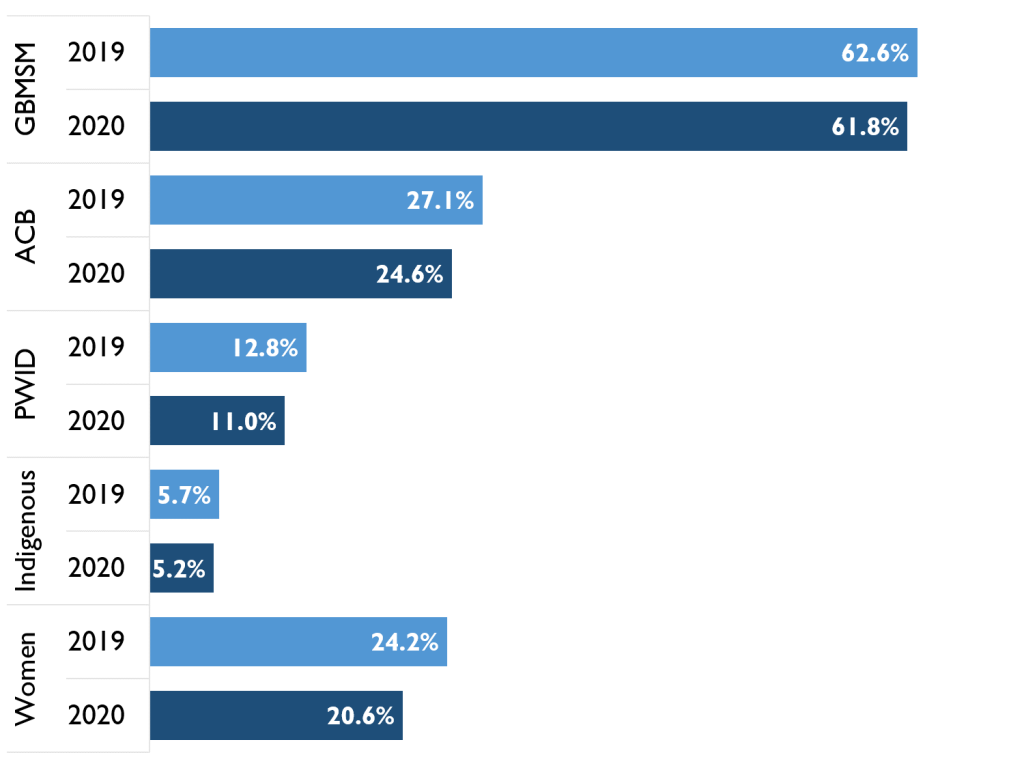
First-time HIV diagnoses by Ontario Priority Population
HIV is not a generalized epidemic in Ontario. It is concentrated in a small number of populations that have higher HIV prevalence than the general population: known as “priority populations” for HIV programming in Ontario’s response to HIV. Unlike HIV exposure categories, the priority populations are not mutually exclusive: an HIV diagnosis can be assigned to more than one priority population (if applicable). Nearly two-thirds of first-time diagnoses are among Gay, Bisexual or Other Men who have sex with men (GBMSM), followed by about a quarter first-time diagnoses among African, Caribbean and Black People (ACB). 1 in 10 first-time diagnoses are in People who use injection drugs (PWID), about 1 in 20 first-time diagnoses are among Indigenous Peoples, and about 1 in 5 first-time diagnoses are among Women.
HIV Care Cascade for Ontario
Analyzing HIV care cascade data in Ontario is critical to understanding our successes and ongoing challenges in meeting HIV care cascade targets. In 2018, an estimated 22,439 people were living with HIV in Ontario (* modelling by PHAC). Of these, an estimated 19,128 people (85.2%) knew their HIV status (i.e. were diagnosed). 16,214 people were on anti-retroviral treatment and 15,755 people were virally suppressed (<200 copies/ml).
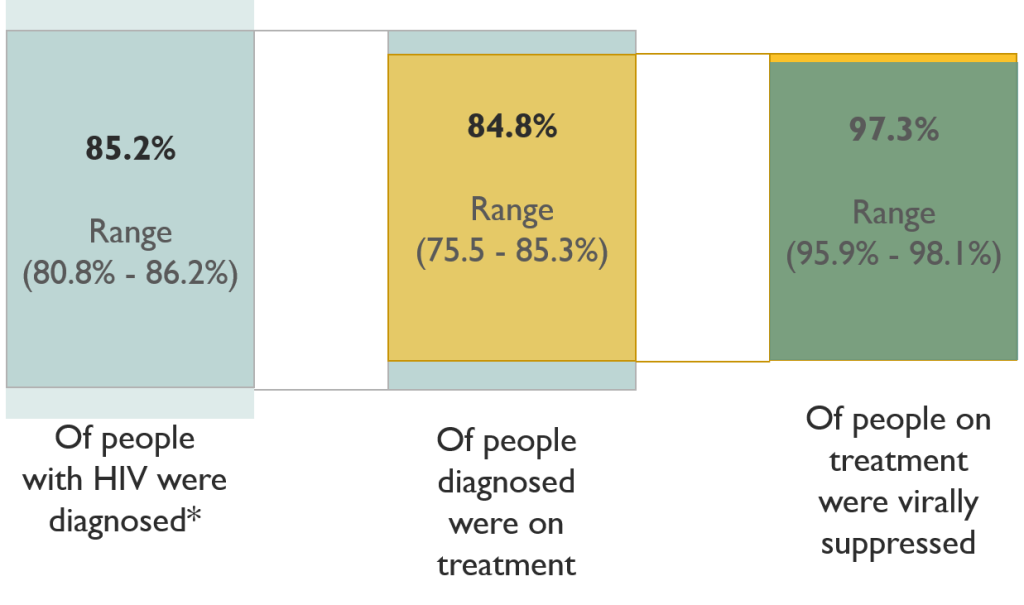
90-90-90 Targets for Ontario
In 2018, Ontario made progress compared to previous years on the 2nd and 3rd 90s, with 84.8% of people diagnosed on treatment (ART), and 97.3% of people on treatment (ART) were virally suppressed. Progress is necessarily on the first two 90’s in order to meet the targets.
